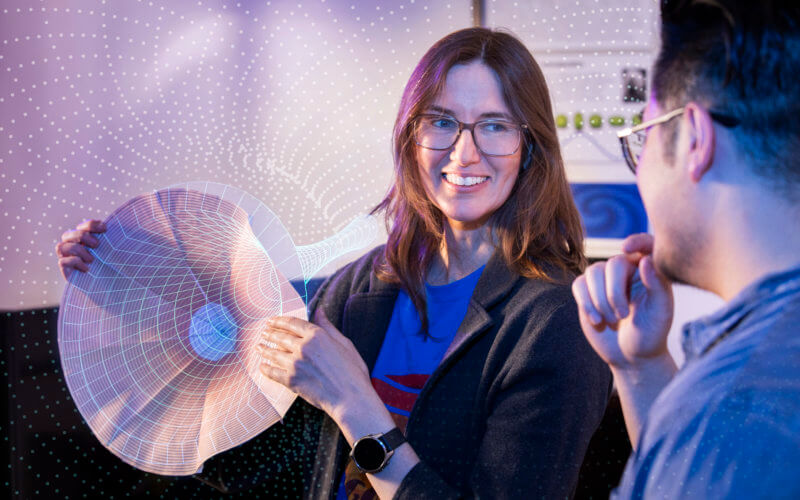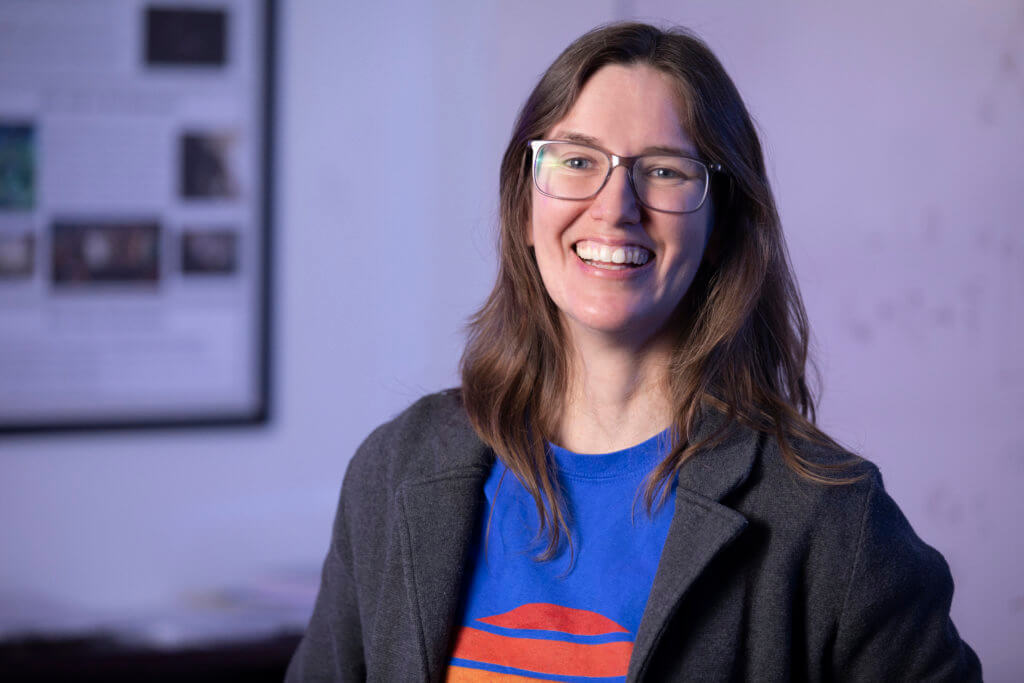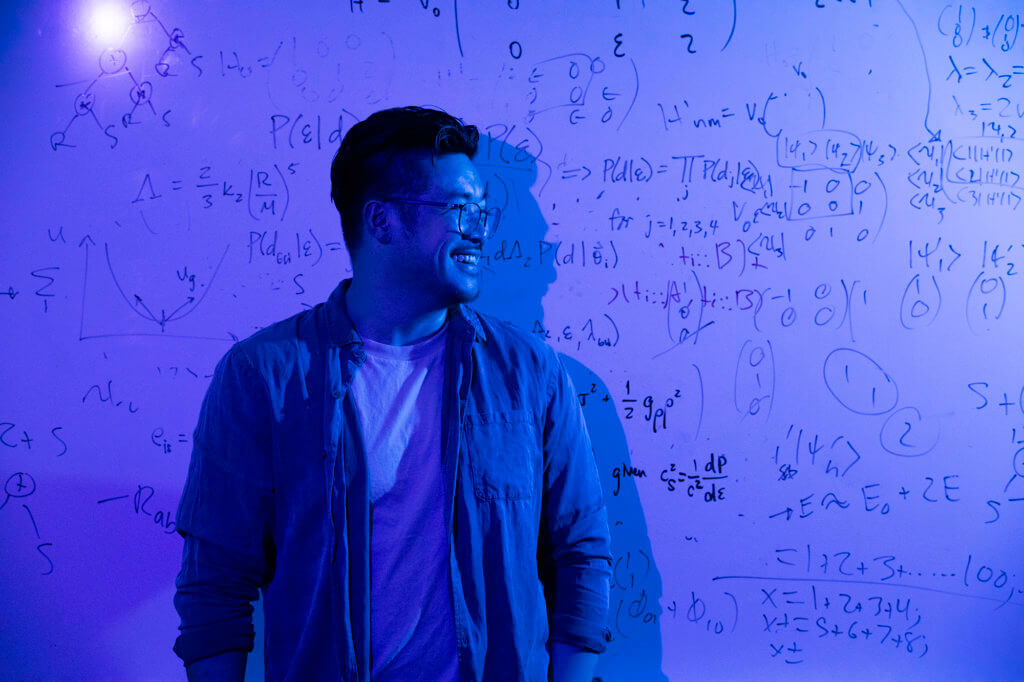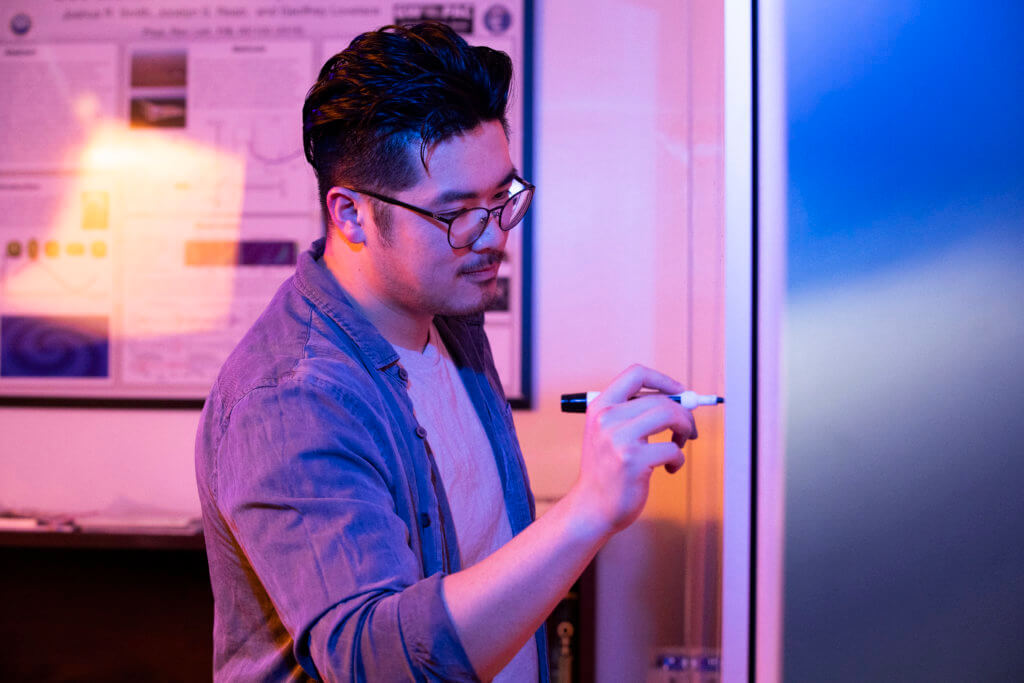
Cal State Fullerton physicists are on the forefront of a new discovery of gravitational waves from two compact cosmic objects not seen by scientists before.
The discovery is the first gravitational-wave detection of a mass-gap object paired with a neutron star, detected during the latest observing run by LIGO, European Virgo Collaboration and Japan’s KAGRA.
The international collaboration announced the new observation April 5 at the American Physical Society meeting in Sacramento. Physicists and students from around the world, including CSUF faculty and student researchers, are attending and presenting at the meeting.
Jocelyn Read, CSUF professor of physics and a co-author of the latest discovery, said the gravitational-wave signal is intriguing because of the mass of the heavier object.

The heavier object falls within a possible mass gap between the heaviest known neutron stars and the lightest black holes. A mass gap is a range of masses where no astronomical objects are found or expected, Read said.
One of the two compact objects that make up this mysterious merger with a neutron star is a small black hole — less massive than any black hole observed in the galaxy, Read said.
“It turns out this event is quite interesting because it’s a merger of a neutron star mass object — between one and just above two times the mass of the sun — with another object between 2.5 to 4.5 times the mass of our sun,” said Read, an astrophysicist. “The most massive neutron star possible is between two and three times the sun’s mass.”
The black hole is smaller because of how light it is compared to other black holes that detectors have observed since the first gravitational-wave discovery in 2015 from a pair of colliding black holes some 1.3 billion light-years away. The discovery marked the dawn of a new era for astronomy.
“This new merger is interesting because it tells us that there are black holes out there that are much smaller than we anticipated,” said Sunny Ng, a physics graduate student and a co-author of the research.

“The fact that we’ve detected a merger with a black hole in a lower mass gap range better informs us on merger rates between compact objects and how our current model of the stellar population might look and why.”
Gravitational waves — ripples in the fabric of space-time that originate from high-energy phenomena in the universe — often come from the crashing of two compact objects, such as black holes and neutron stars, the dense remnants of massive stellar explosions.
This latest gravitational-wave detection, known as “GW230529,” was observed on May 29, 2023, during LIGO’s — advanced Laser Interferometer Gravitational-Wave Observatory — fourth observing run, which followed three years of work to improve the performance of the detectors.
In addition to Read and Ng, the other Cal State Fullerton co-authors of the global research effort are postdoctoral research associates Lami Suleiman and Marcie Bonilla; physics professor Geoffrey Lovelace; and Joshua Smith, professor of physics and Dan Black Director of the Nicholas and Lee Begovich Center for Gravitational-Wave Physics and Astronomy (GWPAC).
All are members of the university’s GWPAC and the LIGO Scientific Collaboration.
An Unexpected Stellar Discovery
As members of LIGO’s Extreme Matter Group, the CSUF researchers compared gravitational-wave data from black holes and neutron stars to models of neutron star matter.
Ng, an extreme matter analyst, investigated how the neutron star-black hole event might affect scientists’ understanding of dense nuclear matter. He showed that more observations of compact-object mergers will be needed to make a significant impact.
“This new observation also suggests that mergers of low mass black holes and neutron stars are more common than previously thought,” Read explained. “Since the two objects are close in mass, it also means that the neutron star could have been ripped apart by the black hole instead of being swallowed whole like we expected from previously observed black hole and neutron star events.
“If that happens, black hole and neutron star events like this could emit light and contribute to the formation of heavy elements such as iodine, gold, and uranium in our universe.”
The Next Generation of Gravitational-Wave Scientists
Ng is on track to graduate in May and has applied to doctoral programs and industry positions. He said working with Read, his research adviser, and gravitational-wave scientists worldwide has prepared him for a career in nuclear astrophysics.

Taking a physics class in high school piqued Ng’s interest and curiosity in the discipline. He earned an associate degree and bachelor’s degree in physics. For his graduate studies, he specifically sought out CSUF to work with Read and GWPAC faculty and student researchers.
“Being a part of the GWPAC team and working on groundbreaking science has been an amazing learning experience,” said Ng, who grew up in the Bay area and is both a first-generation Chinese American and college graduate.
Ng has traveled to regional and national conferences to present his research and credits Read for giving him opportunities to thrive in studying gravitational waves.
“Dr. Read has been an amazing mentor. She’s taught me to be an independent critical thinker and collaborator and has given me unwavering support in my endeavors,” he said. “I’ve gained the skills and knowledge necessary for my future career.”